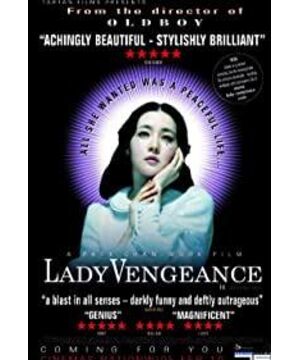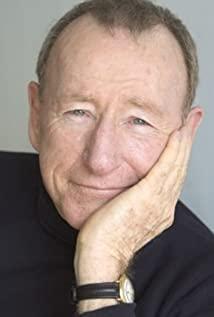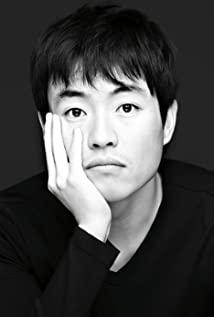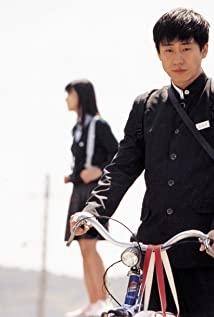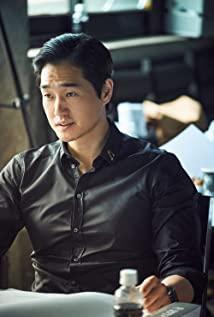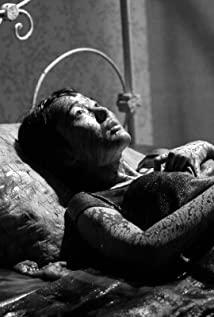The "Vengeance Trilogy" refers to three works directed by South Korean director Park Chan-wook, including Sympathy for Mr. Vengeance, Oldboy and Kindness Lady Vengeance. There is no direct plot connection between the three works, but because they illustrate different themes of revenge, violence and self-redemption, film critics named these three works the "Vengeance Trilogy".
The first of the "Vengeance Trilogy" is the 2002 film "I Want My Vengeance," about a dark and violent revenge story about a deaf and dumb man who needs a massive kidney transplant to save his sister. As a result, he kidnapped a little girl, but because the little girl died unexpectedly in the middle, it led to the ultimate revenge of her father. After the film was released, its box office performance was bleak. The domestic and foreign box office combined was less than half of its production cost, but its reputation continued to rise. Well-known film critic Harry Knowles thought it was a Best movie of 2002.
The second in the "Vengeance Trilogy" is the 2003 film "Old Boy," about a man who has been imprisoned for fifteen years for no reason and is suddenly released and given five days to find out. After its release, the film achieved great success at the box office and word of mouth, and won more than 30 domestic and foreign awards, including the Cannes Film Festival Grand Prize of the Jury at the 57th Cannes Film Festival in 2004. , the unique feature of its video style, was later regarded as a modern classic art.
The third chapter in the final chapter of the "Vengeance Trilogy" is the 2005 film "Kindly Gold," about an innocent young woman imprisoned for thirteen years for the wrongful murder of a child, and when she is released she is released. The search for her daughter begins and her revenge plan begins. The work also blossomed at the box office and word of mouth, and won more than ten domestic and foreign awards, including the 62nd Venice Film Festival Little Golden Lion in 2005.
This article will list some behind-the-scenes tidbits about the "Vengeance Trilogy" and talk about some fun facts about the filming set.
"I Want Vengeance"
1. This film is the first film in film history to describe XX scenes with sign language at the same time.
2. Park Chan-wook spent 20 hours in a row to finish writing the script.
3. In the scene where Song Kangho was covered by a black garbage bag, in order to make his voice sound more real and tired, Song Kangho shouted for three days to destroy his voice.
4. The bridge in the lake was built by the crew.
5. When Song Kang-ho was lying in Shin Ha-kyun's nest waiting for him, the crew suggested that Song Kang-ho snored and purred to pretend to be sleeping, but it was later discovered that Shin Ha-kyun's character was deaf and mute, and the setting of snoring was useless.
6. Shin Ha Kyun once complained that Song Kang Ho slapped him so hard that his face looked different.
7. The takeaway brother who was killed in the film was made a cameo by the famous director Liu Shengwan, who is also the brother of Liu Shengfan, who played the mentally handicapped boy in the film .
8. During the first autopsy, Song Kangho was actually looking at a blank table to act out his reaction.
9. When Shin Ha Kyun rushed up and hit the bodyguard of the organ dealer who was opening the door with a baseball bat, the crew was shocked, because the script was originally supposed to be Shin Ha Kyun quietly following behind and hitting him instead of sprinting to attack.
10. Because the producer stipulates that special effects are not allowed, the part of the fight where Song Kangho kills Shin Ha Kyun at the end of the film is all real. Shin Ha Kyun couldn't make a poster for the movie the next day because his face was still swollen, and Song Kang Ho later invited him to drink to apologize.
11. In 2010, Warner Bros. Entertainment, Inc. bought the rights to the remake.
"old boys"
1. Choi Min-sik actually ate four raw octopuses on the set before the final picture was taken. Although eating raw octopus is common in Korea, it is usually more common to eat it after slicing; After the film won the Grand Jury Prize in the main competition unit of the 57th Cannes Film Festival in 2004, Park Chan-wook and the crew thanked the sacrificed octopuses.
2. Choi Min-sik is a Buddhist, so he has to pray after eating the octopus.
3. Choi Min-sik worked out for six weeks for the role of the film, lost 20 pounds (about 18 pounds), and acted in most of the action scenes himself.
4. In Choi Min-sik's private prison room, the painting that appears frequently is actually the painting "The Man of Sorrow" by the Belgian painter James Ensor ; the painting reads, "If you laugh, the whole world will laugh with you, and if you cry, you will cry alone." This sentence is actually a poem by the famous nineteenth-century American writer and poet Ella Wheeler Wilcox (Ella Wheeler Wilcox). The first two sentences of Solitude.
5. The sedative gas used by the Russian army mentioned by Choi Min-sik in the movie actually alludes to the Moscow 'Nord-ost' theater hostage crisis in Russia in 2002 .
6. Choi Min-sik bumped his head when preventing Jiang Huizhen from peeking at his diary. This was not the original action of the script. At that time, Jiang Huizhen continued to act without laughing. Park Zan-wook thought this scene was very funny and emotional, so he finally kept it. .
7. The sushi restaurant where Kang Hye-jung works is called Mediterranean , which is also the name of the restaurant in real life.
8. Yoo Ji Tae made a special trip to learn yoga for the role in this movie.
9. Where the pace of the film is slow, the same shot generally lasts 10 to 15 seconds, while in fast-paced action scenes, the speed of shot switching is increased to 2 to 6 seconds.
10. In the flashback segment, when the young Choi Min-sik met Yin Zhenxu, Yin Zhenxu was reading a book written by the American poetess Sylvia Plath , and Sylvia Plath was also He committed suicide due to emotional changes.
11. The most famous one-shot fight scene in the film took three days to complete; and there was no special effect in the whole process (except for the final special effect of Cui Min's stabbing of vegetation) .
12. The final scene of the film was filmed in New Zealand; after the credits at the end credits were all over, the audience could still hear the sound of the wind, which was recorded on the set. The director revealed in an interview that he was so moved by the beauty of New Zealand that he kept the sound there.
13. The name of the hero, Oh Dae-Su, was inspired by Oedipus in Greek mythology, who killed his father and fell in love with his mother .
14. The elevator code for the private prison is 0604. After entering this number on the movie's official website, you can register there.
15. The picture of Yoo Ji Tae pulling his sister is very similar to Choi Min Sik pulling Oh Kwang Rok.
"Dear Gold"
1. The snow scene at the end of the movie is not real, but the crew sprinkled two cars of salt on the road and used special effects to correct the effect.
2. The name of the bakery where Lee Young-ae works is "Naruse", a tribute to Japanese film master Mikio Naruse.
3. The original poster of the film was protested by Catholics and some Protestant groups in Korea because of Lee Young-ae's image of the Virgin.
4. As the final chapter of the "Revenge Trilogy", many characters in the film are played by the first two parts of the "Revenge Trilogy" ; including the actor Choi Min-sik of the second part who plays the villain of the third part, The two male protagonists of the first film, Shin Ha-kyun and Song Kang-ho, cameo in the third film; Oh Dal-soo, the private prison operator in the second film, played the cake shop owner of the third film; Kim Byung-ok, the villain's assistant in the second film, played the third film. The priest in the second part; Jiang Huizhen, the heroine of the second part, cameo as a TV host in the third part; Wu Guanglu, an anarchist in the first part, made a cameo as the suicide passerby in the second part and the father of the children who died in the third part; Hypnotist Li Shengxin played the wife of the female prisoner, the villain of the third film, and the villain of the second film, Yoo Ji-tae, made a cameo appearance as the little boy of the third film.
Epilogue
Some people say that people who haven't read the "Vengeance Trilogy" do not understand life, although the themes and ideas explained in these three works are extremely bleak and lost: from "I Want Vengeance", we learn to be our own. It is worthwhile for the person you love to pay, but this does not give you a reason to deprive others of their love; from "Old Boy", we realize that everything has a source, everything has a cause, and those who do good reap good results, and those who talk much We cut ourselves to the root of our tongue; and from Kind Gold, we understand that revenge cannot reverse the past. Only through self-redemption and self-forgiveness can life continue, and only by regaining hope for life can we truly understand the meaning of life.
In the end, the only theme of the "Vengeance Trilogy" is actually hope.
Part of the information comes from IMDb, and some pictures come from the Internet.
View more about Lady Vengeance reviews


